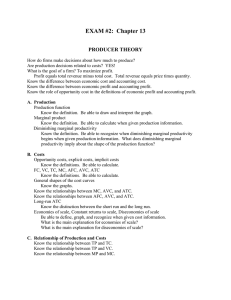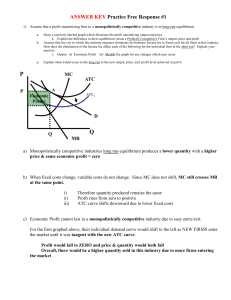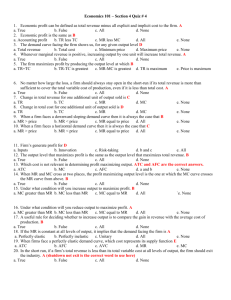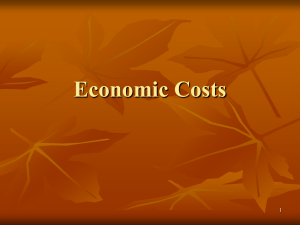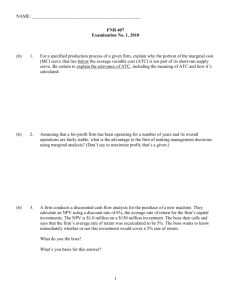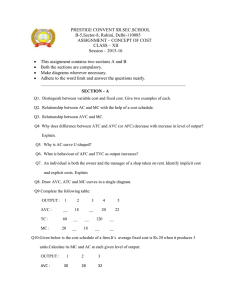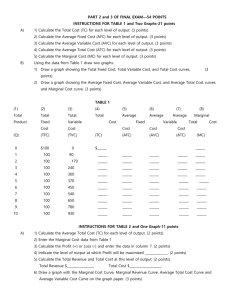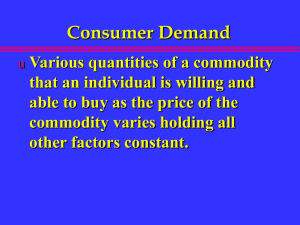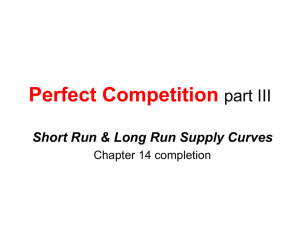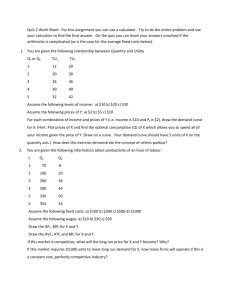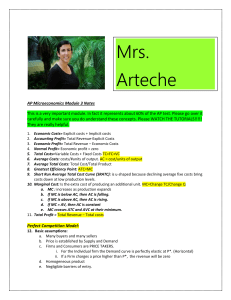AP Economics Costs FRQ: Cost Curves & Economies of Scale
advertisement
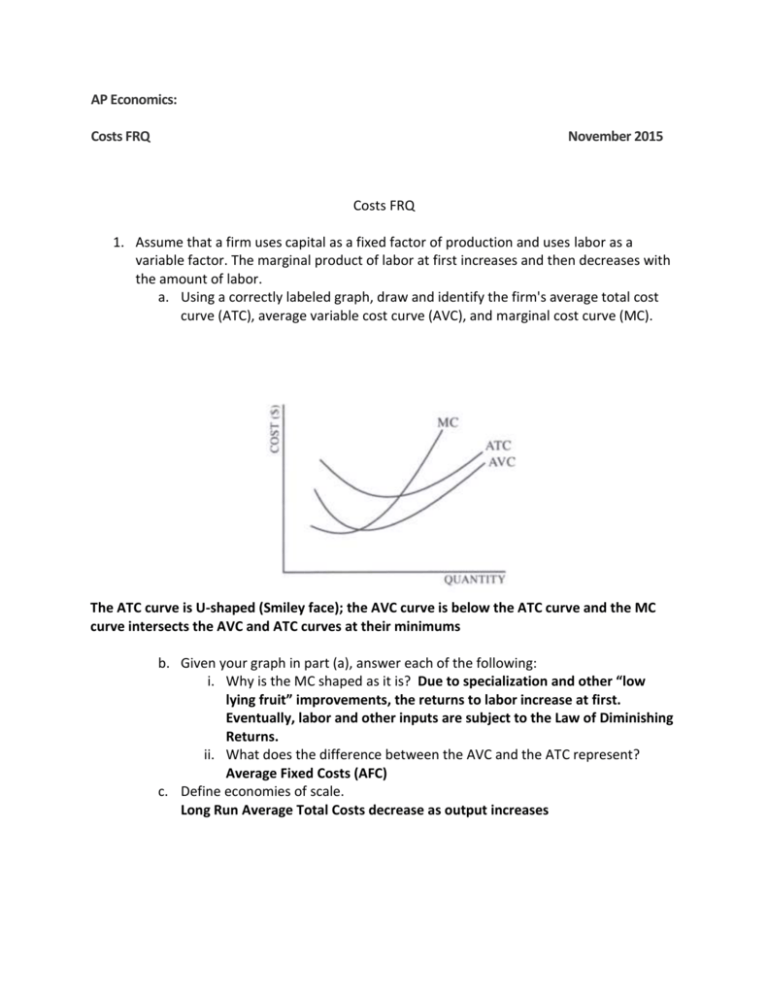
AP Economics: Costs FRQ November 2015 Costs FRQ 1. Assume that a firm uses capital as a fixed factor of production and uses labor as a variable factor. The marginal product of labor at first increases and then decreases with the amount of labor. a. Using a correctly labeled graph, draw and identify the firm's average total cost curve (ATC), average variable cost curve (AVC), and marginal cost curve (MC). The ATC curve is U-shaped (Smiley face); the AVC curve is below the ATC curve and the MC curve intersects the AVC and ATC curves at their minimums b. Given your graph in part (a), answer each of the following: i. Why is the MC shaped as it is? Due to specialization and other “low lying fruit” improvements, the returns to labor increase at first. Eventually, labor and other inputs are subject to the Law of Diminishing Returns. ii. What does the difference between the AVC and the ATC represent? Average Fixed Costs (AFC) c. Define economies of scale. Long Run Average Total Costs decrease as output increases Draw a long-run average total cost curve that has a region of economies of scale followed by a region of diseconomies of scale, as output increases.
